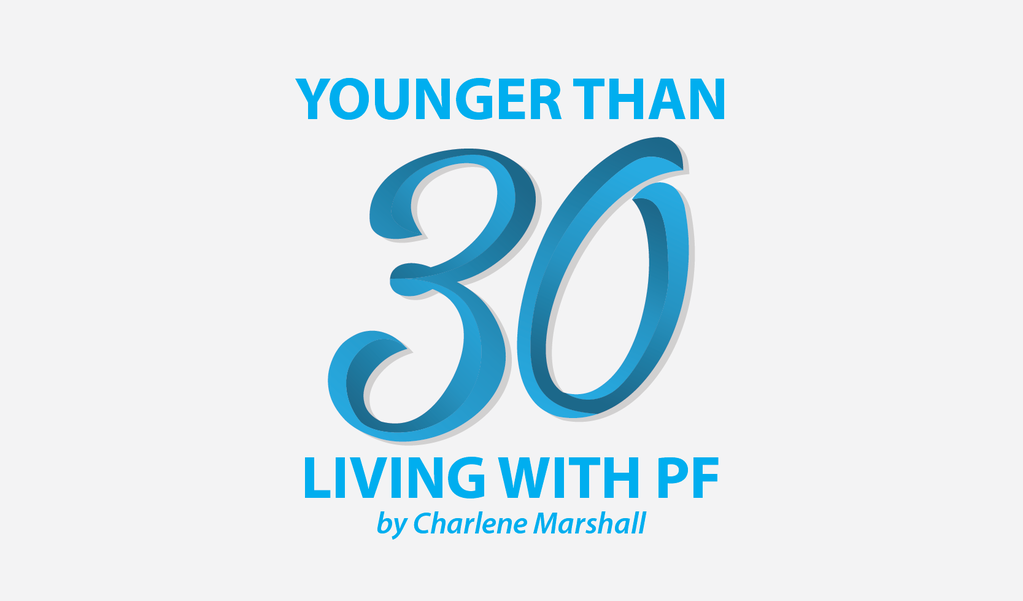Chilled to the Max: Canadian Winters and IPF
Written by |

As a typical Canadian winter commenced with vengeance this weekend, bringing blistery cold winds, snow and ice, I find myself both fearful and anxious about how my lungs will fare throughout these upcoming months. While I have never been someone who has loved winter, I do appreciate the beauty of a fresh snowfall or the slick shine of ice on the branches of trees — sights that can only come with frigid temperatures.
Last year, when I didn’t know that IPF had formed in my lungs, I thought my intolerance to cold was just due to getting older. Or, maybe, I was just having a hard time adjusting following my second trip to Australia, where it was very warm at the time. Little did I know that I was being deprived of oxygen due to the fibrosis growing in my lungs. Now, I wonder, what will worsening lung function mean for the upcoming months?
On Friday, the temperatures were well above seasonal and hit a peak of 18 degrees Celsius (about 64 Fahrenheit), which is abnormally high for late November in Canada. That very night, I was talking to friends about how I was feeling, and I pleasantly told them that I was not having any pain associated with my IPF. That, however, quickly changed as frigid winter weather arrived.
Saturday, with the temperatures hovering around +3, I went out to run some errands. Once outside I felt an unfamiliar and uncomfortable pain in my chest and tightness in my lungs that I can only attribute to the cold. I used to be able to run three to four errands without any trouble, and while I managed Saturday, there was a continuous discomfort that I was aware of while out. I also noticed how quickly I became cold despite layering, and despite wearing a winter coat and boots.
Didn’t dare step into the cold
Upon returning to the warmth of my house (and Christmas tree), it took me a long time to warm up! This was all still in weather that was above zero. On Sunday, between the roaring wind, blowing snow, and a daily high temperature in the minuses, I didn’t dare step outside. That being said, it worked because it was the weekend. But it is unrealistic to avoid going outside regularly. For this reason, I am asking people for suggestions on how to manage the discomfort of IPF during the winter months.
Some tips I have compiled so far include:
- Having someone warm up the car in advance of needing to go outside/drive somewhere.
- Layer clothing, but particularly keep your toes and hands as warm as possible.
- Use a warm scarf to cover your face and nose. (This is a good suggestion, but I do worry about the ability to breathe with a warm or heavy scarf covering my face.)
- Once inside, run your hands under warm water or hold a hot beverage to warm yourself up faster.
If you have any tips for managing the difficulty that IPF brings with breathing in the cold air, or with how to manage always feeling cold, I’d love to hear them! I am currently sitting inside, with the fireplace on and the thermostat at 72 degrees Fahrenheit and am still freezing, particularly my nose, hands and feet. Perhaps there is also a physiological component to this?
In any case, with November only coming to an end, it’s anxiety-provoking and worrisome to think about how I’ll get through the next several months of blistery cold Canadian winter weather!
Note: Pulmonary Fibrosis News is strictly a news and information website about the disease. It does not provide medical advice, diagnosis, or treatment. This content is not intended to be a substitute for professional medical advice, diagnosis, or treatment. Always seek the advice of your physician or other qualified health provider with any questions you may have regarding a medical condition. Never disregard professional medical advice or delay in seeking it because of something you have read on this website. The opinions expressed in this column are not those of Pulmonary Fibrosis News, or its parent company, Bionews Services, and are intended to spark discussion about issues pertaining to pulmonary fibrosis.








Lorraine Martel
I layer, layer, layer. I use Cuddle Ups, then a long sleeve shirt and then an insulated vest. Last year my kids bought me jacket at Home Depot. It uses a battery and heats up the chest, back, sleeves and pockets. I love it. On top of that I do wear a scarf so if I am having a hard time I just hold it to my face for a few minutes. Also wear a rabbit fur hunter's hat and gloves. I go out on my scooter for about 45 minutes a day. When I get back in the house I sit on my chair with an electric throw blanket. So far this has worked for me. I live in New England and our winters do get bitter cold as well but I refuse to let IPF keep me indoors. Hope this helps you. I was diagnosed two years ago and am on oxygen 24/7
Beth Bushey
other than having a harder time breathing in the cold it doesn't bother me anymore than it used to. I do find I need to cover my nose and mouth in the cold.....even just a surgical mask, something to help the warm air stay closer to your mouth and nose. You could also keep those hot paws packets in your pockets (skiers and snowboarders use them) or the battery operated vest, gloves and socks. I'm also in Canada, southern Ontario.
Jane-Ann Schutt
It's now awhile since you wrote your article, and I was wondering if you have found other ways to deal with winter? I went with my dog this morning Nov. 19 and it was cold with wind. I started losing my breath as soon as I got outside and after a brief walk could hardly breathe when I came in. Any suggestions? I live in Northern Ontario.
Charlene Marshall
Hi Jane-Ann,
I am so sorry to hear that you were faced with shortness of breath due to the cold when you took your dog outside. I know the feeling of that, and it is so frustrating!
I am also sorry to say that I haven't had much success in figuring out ways to reduce my own shortness of breath or cough when I am in the cold air. One thing that has helped though is the purchasing of a Vogmask with the valve that filters my own air and protects me from breathing in the cold air. This does prevent my coughing quite a bit, and although it is a pain in the neck to wear (and have people look at you!) it is the best thing I've found so far. I got mine off Amazon for about $40. Maybe give this a try? It also is good to have on hand for hospital visits, appointments, etc to protect from cold and flu viruses/bacteria, so at least it is dual-purposeful for the price of it :-)
Goodluck!
Jane-Ann Schutt
Appreciate your concern and advice. Thanks Charlene
Thomas G Davis
I am currently visiting Montrose Colorado. I find it very difficult to breathe in the cold climate and elevation. I did not have trouble last year but do have it this year. I also noticed my heart rate increases substantially like 138 and my pacemaker is set at 60. I cannot do anything that required bending over without sheer exhaustion My lung capacity is 60%. I’ve had IPF for five years now and I thought it was stable but evidentlg it is not.
Charlene Marshall
Hi Thomas,
Thanks so much for reading my columns and for getting in touch with us. So sorry to hear of the difficulty you're having with the cold climate and elevation; I always wondered how the elevation specifically might impact those of us with lung conditions. How long are you visiting Colorado for? It might be best to cut your trip short if you can to allow your heart rate to come down a bit, that is pretty high for someone with IPF based on my understanding. Sorry you're experiencing the sheer exhaustion, that must be terrible for you! Is it worth it do you think to see a doctor to see if there is anything that might help you cope with the elevation while you're there?
Hang in there and feel free to write any time!
Charlene.